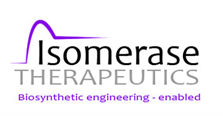预约演示
更新于:2025-08-29

Biotica Technology Ltd.
更新于:2025-08-29
概览
关联
100 项与 Biotica Technology Ltd. 相关的临床结果
登录后查看更多信息
0 项与 Biotica Technology Ltd. 相关的专利(医药)
登录后查看更多信息
12
项与 Biotica Technology Ltd. 相关的文献(医药)2015-02-01·Chemistry & biology
Bioengineering and Semisynthesis of an Optimized Cyclophilin Inhibitor for Treatment of Chronic Viral Infection
Article
作者: Gregory, Matthew Alan ; Warneck, Tony ; Wilkinson, Barrie ; Kendrew, Steve ; Bobardt, Michael ; Chatterji, Udayan ; Garcia-Rivera, Jose A ; Gallay, Philippe ; Elmér, Eskil ; Moss, Steven James ; Coates, Nigel ; Leyssen, Pieter ; Neyts, Johan ; Nur-E-Alam, Mohammad ; Hansson, Magnus Joakim
Inhibition of host-encoded targets, such as the cyclophilins, provides an opportunity to generate potent high barrier to resistance antivirals for the treatment of a broad range of viral diseases. However, many host-targeted agents are natural products, which can be difficult to optimize using synthetic chemistry alone. We describe the orthogonal combination of bioengineering and semisynthetic chemistry to optimize the drug-like properties of sanglifehrin A, a known cyclophilin inhibitor of mixed nonribosomal peptide/polyketide origin, to generate the drug candidate NVP018 (formerly BC556). NVP018 is a potent inhibitor of hepatitis B virus, hepatitis C virus (HCV), and HIV-1 replication, shows minimal inhibition of major drug transporters, and has a high barrier to generation of both HCV and HIV-1 resistance.
2014-12-23·Proceedings of the National Academy of Sciences of the United States of America1区 · 综合性期刊
Analogs of natural aminoacyl-tRNA synthetase inhibitors clear malaria in vivo
1区 · 综合性期刊
Article
作者: Ribas de Pouplana, Lluís ; Francklyn, Christopher S. ; Wilkinson, Barrie ; Tor, Anna ; Royo, Miriam ; Marín-García, Patricia ; Azcárate, Isabel G. ; Varon, Sònia ; Novoa, Eva Maria ; Camacho, Noelia ; Moss, Steven ; Cortés, Alfred ; Bautista, José M. ; Mirando, Adam C.
Malaria remains a major global health problem. Emerging resistance to existing antimalarial drugs drives the search for new antimalarials, and protein translation is a promising pathway to target. Here we explore the potential of the aminoacyl-tRNA synthetase (ARS) family as a source of antimalarial drug targets. First, a battery of known and novel ARS inhibitors was tested against Plasmodium falciparum cultures, and their activities were compared. Borrelidin, a natural inhibitor of threonyl-tRNA synthetase (ThrRS), stands out for its potent antimalarial effect. However, it also inhibits human ThrRS and is highly toxic to human cells. To circumvent this problem, we tested a library of bioengineered and semisynthetic borrelidin analogs for their antimalarial activity and toxicity. We found that some analogs effectively lose their toxicity against human cells while retaining a potent antiparasitic activity both in vitro and in vivo and cleared malaria from Plasmodium yoelii-infected mice, resulting in 100% mice survival rates. Our work identifies borrelidin analogs as potent, selective, and unexplored scaffolds that efficiently clear malaria both in vitro and in vivo.
2012-10-01·Antimicrobial agents and chemotherapy2区 · 医学
Multiple Mutations in Hepatitis C Virus NS5A Domain II Are Required To Confer a Significant Level of Resistance to Alisporivir
2区 · 医学
Article
作者: Gregory, Matthew A. ; Wilkinson, Barrie ; Gallay, Philippe A. ; Hopkins, Sam ; Bobardt, Michael ; Lin, Kai ; Chatterji, Udayan ; Garcia-Rivera, Jose A.
ABSTRACT:
Alisporivir is the most advanced host-targeting antiviral cyclophilin (Cyp) inhibitor in phase III studies and has demonstrated a great deal of promise in decreasing hepatitis C virus (HCV) viremia in infected patients. In an attempt to further elucidate the mechanism of action of alisporivir, HCV replicons resistant to the drug were selected. Interestingly, mutations constantly arose in domain II of NS5A. To demonstrate that these mutations are responsible for drug resistance, they were reintroduced into the parental HCV genome, and the resulting mutant viruses were tested for replication in the presence of alisporivir or in the absence of the alisporivir target, CypA. We also examined the effect of the mutations on NS5A binding to itself (oligomerization), CypA, RNA, and NS5B. Importantly, the mutations did not affect any of these interactions. Moreover, the mutations did not preserve NS5A-CypA interactions from alisporivir rupture. NS5A mutations alone render HCV only slightly resistant to alisporivir. In sharp contrast, when multiple NS5A mutations are combined, significant resistance was observed. The introduction of multiple mutations in NS5A significantly restored viral replication in CypA knockdown cells. Interestingly, the combination of NS5A mutations renders HCV resistant to all classes of Cyp inhibitors. This study suggests that a combination of multiple mutations in domain II of NS5A rather than a single mutation is required to render HCV significantly and universally resistant to Cyp inhibitors. This in accordance with
in vivo
data that suggest that alisporivir is associated with a low potential for development of viral resistance.
100 项与 Biotica Technology Ltd. 相关的药物交易
登录后查看更多信息
100 项与 Biotica Technology Ltd. 相关的转化医学
登录后查看更多信息
组织架构
使用我们的机构树数据加速您的研究。
登录
或

管线布局
2026年01月02日管线快照
管线布局中药物为当前组织机构及其子机构作为药物机构进行统计,早期临床1期并入临床1期,临床1/2期并入临床2期,临床2/3期并入临床3期
其他
2
登录后查看更多信息
药物交易
使用我们的药物交易数据加速您的研究。
登录
或

转化医学
使用我们的转化医学数据加速您的研究。
登录
或

营收
使用 Synapse 探索超过 36 万个组织的财务状况。
登录
或

科研基金(NIH)
访问超过 200 万项资助和基金信息,以提升您的研究之旅。
登录
或

投资
深入了解从初创企业到成熟企业的最新公司投资动态。
登录
或

融资
发掘融资趋势以验证和推进您的投资机会。
登录
或

生物医药百科问答
全新生物医药AI Agent 覆盖科研全链路,让突破性发现快人一步
立即开始免费试用!
智慧芽新药情报库是智慧芽专为生命科学人士构建的基于AI的创新药情报平台,助您全方位提升您的研发与决策效率。
立即开始数据试用!
智慧芽新药库数据也通过智慧芽数据服务平台,以API或者数据包形式对外开放,助您更加充分利用智慧芽新药情报信息。
生物序列数据库
生物药研发创新
免费使用
化学结构数据库
小分子化药研发创新
免费使用